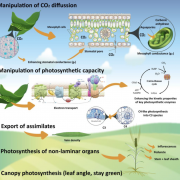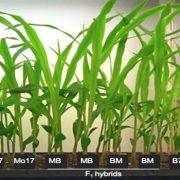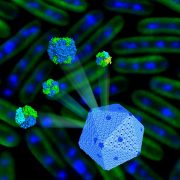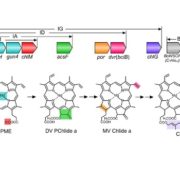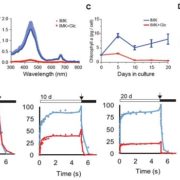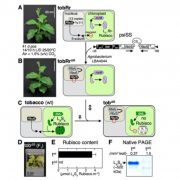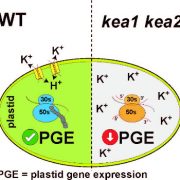Condensation of Rubisco into a proto-pyrenoid in higher plant chloroplasts (bioRxiv)

Rubisco is a major enzyme in assimilating CO2 during photosynthesis. The efficiency of CO2 assimilation is compromised by a low ratio of CO2/O2, especially in C3 plants like rice, wheat and soybean. Algae sequester Rubisco as a condensate in a microcompartment called a pyrenoid within the chloroplast and have a CO2-concentrating mechanism that delivers CO2 to the Rubisco within these sites. To address the feasibility of introducing a similar CO2-concentrating strategy to higher plants, Atkinson et al. expressed a mature EPYC1 (Essential Pyrenoid Component 1; a Rubisco-linking protein) and a plant-algal hybrid Rubisco in Arabidopsis chloroplasts. This expression led to Rubisco condensates, “proto-pyrenoids,” formation in the chloroplast. Further analysis of photosynthetic efficiency and biomass production of the transgenic plants showed no harmful effect. This study opens the possibility for increasing Rubisco CO2 assimilation efficiency in higher plants by next introducing the algal CO2 concentration mechanism to pump CO2 into the proto-pyrenoid. (Summary by Sunita Pathak @psunita980) bioRxiv 10.1101/2020.10.26.354332


